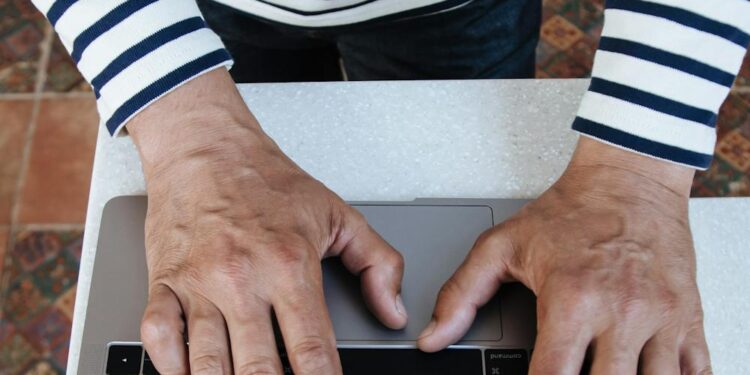User expectations have changed. Fast. People no longer tolerate clunky designs, confusing layouts, or slow-loading pages. They want interactions to feel natural, fluid, and almost invisible. This is where micro-interactions become the game-changer.
What Are Micro-Interactions?
Micro-interactions are subtle design elements that guide users, provide feedback, or enhance usability. Think of the “like” button animation on Instagram, a loading spinner, or the satisfying bounce when you reach the bottom of a page. These may seem small, but they carry huge weight.
They help users understand what’s happening. They give confirmation. They show system status. Most importantly, they create emotion.
In the world of “ux and ui design services,” micro-interactions are no longer optional. They are essential. In fact, they can make or break the entire user experience.
Why Should You Care?
Your users make split-second judgments. A study by Google found that users form an opinion about a website in just 50 milliseconds. That’s faster than a blink. If your product doesn’t “feel” intuitive, you’ve lost them.
Another report by Forrester shows that a better UX design can raise conversion rates by 400%. That’s not a typo. It means investing in quality “ui ux design & development services” isn’t just smart—it’s critical.
Design That Talks Back
Imagine this. You fill out a form and press “Submit.” Nothing happens. You’re confused. Did the form go through? Did you make a mistake? That uncertainty causes friction.
Now imagine the same form with micro-interactions. The button turns green. A checkmark appears. Maybe a subtle animation confirms your submission. Suddenly, the experience feels smoother. Smarter. Friendlier.
Users need reassurance. Micro-interactions provide that. They act like digital body language, confirming every move and guiding users along the way.
Types of Micro-Interactions That Matter
Here are four key categories you can start implementing right now.
1. Feedback Interactions
These tell users their action worked. Clicking a button that changes color, getting a subtle vibration, or hearing a sound—these all give a sense of accomplishment.
2. Navigation Interactions
A hover effect. A transition when moving between pages. These micro-interactions make users feel like they’re in control. They understand where they are and where they’re going.
3. System Status
Is the page loading? Is the file uploading? Users shouldn’t be left guessing. A micro-interaction like a spinning loader or progress bar can save a ton of frustration.
4. Educational Interactions
Onboarding animations. Tooltip hints. These teach users how to use your product in a friendly, non-intrusive way. That’s UX magic in motion.
Where Most Brands Go Wrong
Too many businesses overlook these details. They focus on features, not feelings. That’s a costly mistake.
Micro-interactions bridge the gap between function and emotion. They are not about flashy effects. They are about clarity, guidance, and delight. Without them, your users feel lost or bored—or both.
If you’re investing in “ux and ui design services,” you can’t afford to ignore these elements.
Real Results from Real Brands
Let’s take an example. Dropbox implemented a playful animation on file uploads. The result? A 10% increase in customer satisfaction.
Spotify uses interactive loading animations to keep users engaged during song buffering. The bounce and rhythm align with their brand’s energy. This has helped them reduce user drop-off during load times.
Even small apps with limited budgets report improved engagement and retention when they focus on micro-interactions.
How to Implement Micro-Interactions Effectively
Not every animation is a good animation. Badly implemented micro-interactions can feel gimmicky. They can slow down the experience. Here’s how to get it right.
Start With a Purpose
Don’t animate just for fun. Every micro-interaction should serve a function. Does it guide? Does it inform? Does it enhance?
Keep It Subtle
Micro means micro. If users notice it too much, it’s probably too loud. Aim for gentle nudges, not fireworks.
Test and Measure
Monitor how users respond. Use tools like Hotjar or Google Analytics to track behavior. If bounce rates drop or conversions increase, you’re on the right track.
Work with Experts
Partnering with skilled “ui ux design & development services” providers ensures your product gets the polish it needs. They know how to balance creativity and usability.
The Emotional Connection
Humans crave interaction. We want to feel heard, seen, acknowledged—even by software. Micro-interactions create these moments of connection.
They make digital experiences feel human. And in a world full of noise, that stands out.
Don’t Wait—Start Small
You don’t need to redesign your whole interface. Begin by improving one touchpoint. Add a hover effect on a button. Introduce a progress bar during file uploads. Enhance your 404 page with a subtle animation.
Each improvement is a step toward better user satisfaction.
The Bigger Picture
If your platform feels outdated or robotic, users will move on. Your competitors are already embracing micro-interactions. You need to catch up—or better yet, leap ahead.
With modern “ux and ui design services,” you can turn ordinary experiences into memorable ones. You can engage, retain, and convert more users. And yes, you can do it with grace, clarity, and delight.
Take Action Today
If you’re building an app, website, or product—prioritize micro-interactions. Hire design teams that understand human psychology. Make emotional connections. Create joyful moments. Because that’s what people remember.
And if this post resonated with you or helped you in any way, please share it with your network. Link to it in your next blog. Pass it on to your UX team. The more we design with emotion and clarity, the better the digital world becomes for all of us.











